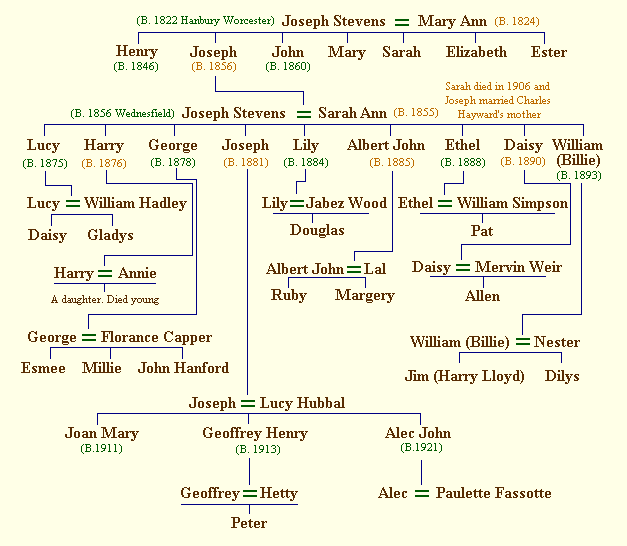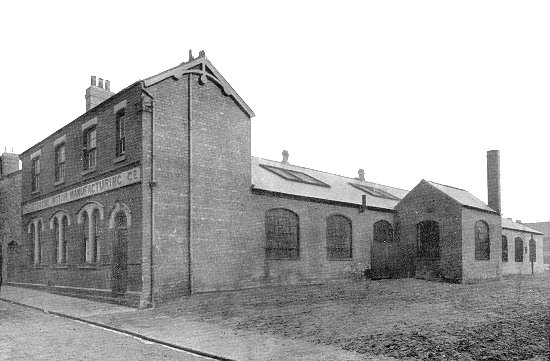|
Family Background
Geoff was born into a family of
engineers, who originated in the hamlet of Hanbury in
Worcestershire, and moved to Wednesfield in the first
half of the 19th century. His Great Grandfather, Joseph
Stevens and his wife Mary lived in Hickman Street and
Cross Street in Wednesfield and had 7 children, 3 boys
and 4 girls. Their second eldest boy, also called
Joseph, set himself up in business in 1874, at Cross
Street, Wednesfield, as an engineering blacksmith,
trading as J. Stevens & Company.
He was a very skilled man and
turned out a wide range of products from garden tools,
hinges, nuts, bolts, and nails; and would repair
anything from wheelbarrows to bicycles. He also did a
lot of work for the lock trade, and the traditional
blacksmith's work of horse shoeing and bridleware.

The Stevens family tree.
He married Sarah, and they had 9
children, 5 boys and four girls. Their eldest son,
Harry, joined his father in the business. He had a flair
for engineering and was quick to learn. He showed an
early skill at designing and manufacturing special
purpose machines and tools.
In 1894 the business moved to
Tempest Street in Wolverhampton and Harry's younger
brother Joseph began to work there. Joseph Stevens
Senior purchased an American 'Mitchell' single cylinder
4-stroke petrol engine, possibly to provide power for a
blower for the forge hearth, or even just out of
curiosity. It wasn't realised at the time, that the
purchase would greatly change the family's fortunes.
Harry was not impressed with the engine
and decided that he could build something far better. He
bought some rough castings from a firm at Derby, and the
two brothers machined them. The finished engine proved
to be an efficient and reliable design.
Harry and his father were quick to
realise the potential of the engine, which could provide
power for many industrial applications. They further
improved the design and decided to go into production.
Harry also saw the potential of
using an engine for powered road transport. After
reading an article about powered bicycles, he fitted the
'Mitchell' engine into an old B.S.A. bicycle that had
been lying around the works. The motorised bicycle
worked extremely well, apart from the temperamental
engine.
In 1899 Harry and his three eldest
brothers, Joseph, George, and Albert John (known as
Jack) founded the Stevens Motor Manufacturing Company, a
venture that ran alongside the existing family business.
While Harry got the business underway, his three
brothers took outside jobs in order to help to finance
the venture.

The Stevens Motor Manufacturing
Company in Pelham Street. |